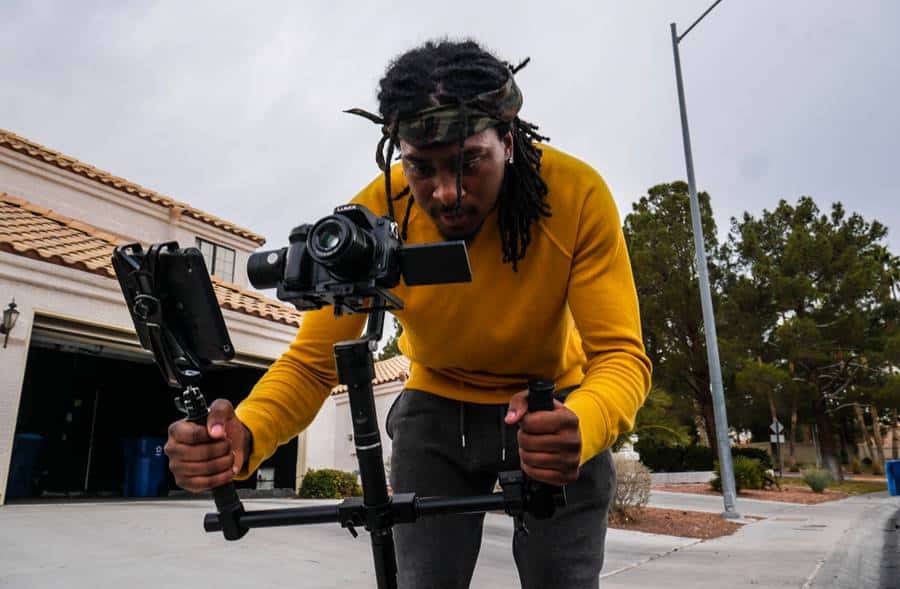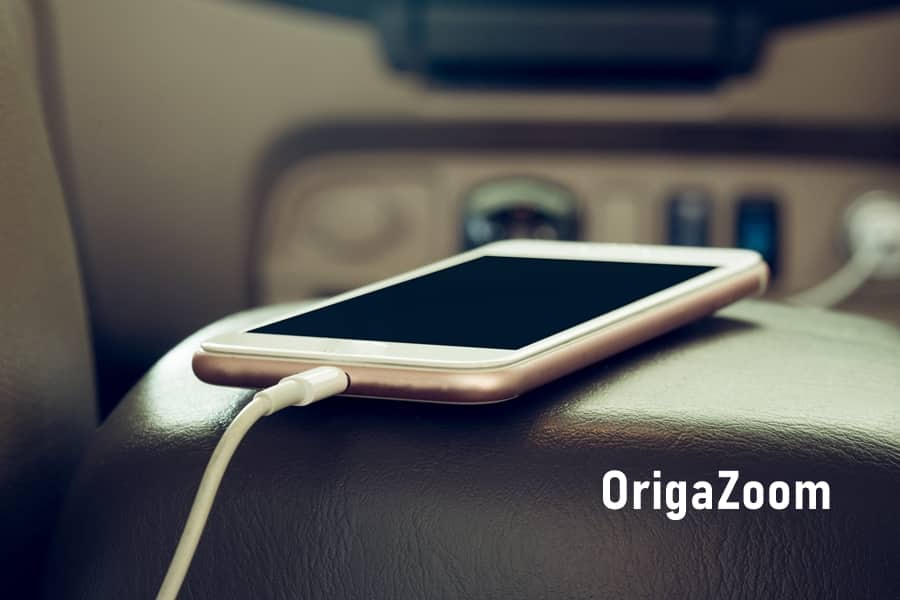Choosing an image stabilization lens or not is a dilemma that is not always obvious to solve, especially when you are starting out and are not yet familiar with the technique. Follow this guide to know when to choose image stabilization lens.
I get quite a few questions every day via the comments or contact page, and a number of relate to the topic. I cannot always help you with your choices, because everything depends on your needs, and I obviously do not know all the lenses that exist. 😉
That said, the question often comes up: should we choose image stabilization lens or not? This is a question that deserves to be asked, and to which there is obviously no good answer that applies to all situations. So, let’s see together what are the criteria that will help you decide, but first let’s see what it is, this famous stabilization.
What is Image Stabilization?
Stabilization is a mechanism built into the lens (or sometimes into the case, but in this case the question does not arise 😉).
It allows to detect the micro-movements of the photographer and compensate them by moving the optical elements in the other direction (to make it simple).
Most stabilizations act on angular movements (for simplicity, when you tilt your device slightly more or less), but not lateral (a slight shift from left to right for example).
Some high-end models (including the Canon 100 mm f/2.8 macro L IS USM) offer a more advanced stabilization system that also acts on the latter type of movement. But it is actually only useful at very small distances, so in macro.
Why Image Stabilization Lens?
You may have to ask yourself why it is important to compensate for your micro-movements? Well if you have read my article on shutter speed, you should know that at low speed, you can get on your images a blur of motion of the worst effect, due to your micro-movements precisely.
To find out what speed is needed to eliminate this blur, there is one simple rule that it is always worth remembering. You do:
- Focal length x multiplier of your sensor = X
- And your speed must be equal to or faster than 1 / x.
If you have not understood anything or do not know the multiplier of your sensor, take the time to read the articles about the focal length and size of the sensor. Don’t worry, it looks complicated like that, but in fact it’s extremely simple. 🙂
With stabilization, you can gain from 1 to 4 notches (or stops, or it) on the required shutter speed. If you know what 1 to 4 stops is theoretically but it does not speak to you concretely, know that it feels concretely when shooting, in some situations at least. Without stabilization, do not even try to transgress the above rule, under pain of blur. (unless you are really very stable!)

(Obviously I say this, but if you shoot at 1/60 instead of 1/80, as long as you pay attention to stay stable it will be OK huh… 😉)
So, let’s look at the criteria that will allow you to know whether stabilization will be useful to you.
Can I Use Equivalent Lens without Image Stabilization?
Often the question arises between 2 lenses equivalents in terms of focal and aperture, one version of which is stabilized and the other is not. The 1st mistake would be to think that because the only thing that changes in the name is the presence or not of an “IS” or a “VR”, the 2 lenses are at all points equivalent.
Indeed, sometimes the stabilized version of a lens is mainly the new version, and also includes improvements in optical quality in particular. In this case, it may be interesting to compare the quality of the 2 lenses on a specialized site (I think of the excellent but technical).
I’m talking about optical quality, but there may be other aspects that change.
In short, so think that it is not the same lens, even if it is of the same brand, and so make yourself an opinion as you usually do with lenses of different brands (testing on specialized sites, reading this blog, reviews on forums, etc…).
Will You Be Limit in Light?
If you shoot most of the time in ideal light conditions (outdoors, during the day, in direct sunlight), you will often have the opportunity to shoot at high shutter speeds, and therefore the presence or not of stabilization will not have much impact on you.
That said, if you are taking photograph in limited light conditions (even downright difficult), the stabilization will allow you to significantly slow down your shutter speed without having a blur of movement. Winning 2 notches is pretty huge, and in some cases, it can make the difference between a black photo, and a photo where you see something.
Here again, and as often, so it depends on your use and the use of the goal.
By the way, it goes without saying but it goes better by saying it: if you shoot on tripod almost all the time, needless to say that stabilization will not be useful to you, and even that it would be better to disable it.
How Do You Know If You’re Going to Be Limit in Light?
I imagine that reading the previous paragraph, some of you (especially the less experienced ones) will still have a hard time determining whether they will need stabilization. Indeed, there are tons of intermediate situations between the full sun and the concert photo in a dark bar. 😛
If you do not have a device yet and you ask this question for the lens of the kit, I would tend to advise stabilization in any case. This will allow you to be a little more comfortable on the shutter speed at first, and will probably save a few shots. Which will not prevent you from paying more attention to speed once you have a little more experience and look for an improvement in the sharpness of your images.
If you already have a camera and you asking this question for the buying of lenses, there are 2 solutions:
Look in your old photos (especially those that are missed) what your shutter speed was compared to your focal length. If it was always more than enough, it is that you often work in good conditions, and stabilization is not necessarily a priority.
For indication, at fairly large focal lengths (200 mm for example), it is possible to be limited in cloudy weather, depending on the capabilities of your case.
Place yourself voluntarily in the worst light situations you are likely to encounter in what you usually do as photos. You will see if you are limits in speed.
Feel free to cumulate the 2: in light of what I just explained to you, maybe you will “feel” more if you need stabilization or not. 😉
A Concrete Example
As a practical example is often better than the theory, take the case of the 70-200 mm. at Canon in particular, this quality lens exists in 4 versions:
• F / 4 without stabilization
• F / 4 with stabilization
• f / 2.8 without stabilization
• f / 2.8 with stabilization
You can imagine that the price is increasing between these 4 models, going from $570 for the cheapest to $2300 for the latest version. So, the choice is cornelian.
So, let’s take an example of Jeanne and John, who both wonder what version to add to their camera bag.
Jeanne wants to buy a 70-200 mm for its versatility and image quality, and because she needs a fairly long focal length: she does a lot of portraits when it’s nice, and also enjoys photographing animals in zoos.
John just got his 1st accreditation to photograph a festival: he is all excited, but knows that the scene will be far enough away from the pit to photographers, so he makes it a long enough focal point.
Before I tell you what our 2 friends will choose, I invite you to think for a second about the choice you would make in their place (assuming that your budget is not limited but you also do not want to throw your money out the windows).
Jeanne will not encounter too many difficult light situations, and therefore can no doubt do without stabilization. As for whether it should choose the F/4 or f/2.8 version, the question arises more in terms of depth of field play.
The long enough focal length allows to have a shallow depth of field of the most beautiful effect even at f / 4, but if it has the budget, why not go crazy and afford the f/2.8? Everything also depends on the other lens that tempt it. 😉
John, meanwhile, will have to deal with very difficult light situations. Gaining a notch thanks to the opening, and earning 2 or more thanks to the stabilization will be almost indispensable to him. You guessed it, John will have to break his piggy bank and invest in the most expensive version, the stabilized f/2.8.
These examples are deliberately caricatured to be more talkative, but I hope you understand the idea. 😉
Do not hesitate to post a question in the comments, and consider subscribing to the newsletter if this is not done yet, you will be notified of upcoming articles. And don’t forget to share the article! 😉🙂🙂


